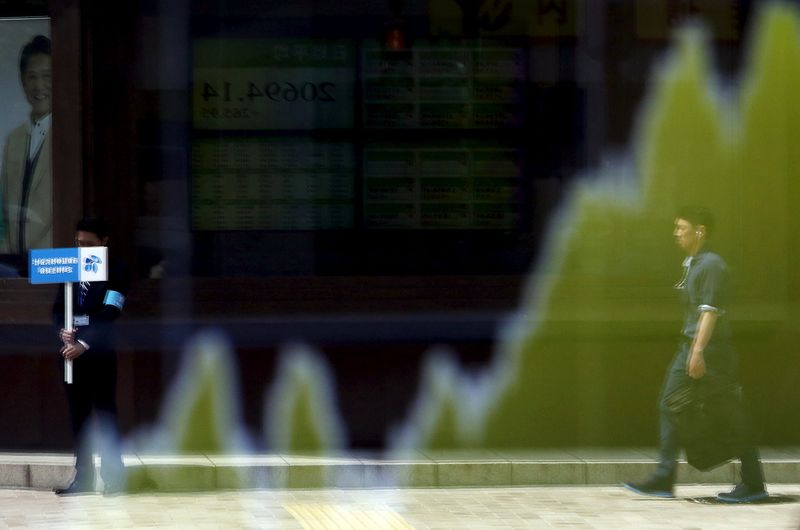By Ambar Warrick
Investing.com-- Japanese stocks led gains across Asia on Thursday after the country’s second-quarter GDP was revised higher, while losses in technology giant Tencent pulled Hong Kong’s main index lower.
Japan’s Nikkei 225 index shot up more than 2% after the country’s second-quarter GDP was revised to annualized growth of 3.5%, from a previous reading of 2.2%.
Strength in business and consumer spending was the biggest driver of the reading, which now puts the Japanese economy above pre-pandemic levels. But rising inflation and interest rates have somewhat muddied Japan’s economic outlook for the remainder of the year.
A resurgence in COVID-19 cases is also expected to weigh on activity.
Broader Asian stocks also rose on Thursday, tracking an overnight rally on Wall Street as the dollar and Treasury yields retreated. But investors doubted whether the gains would last, given that the Federal Reserve is set to keep raising interest rates this year.
The central bank also expects the U.S. economy to remain “generally weak,” according to a Fed report released on Wednesday. Traders are pricing in a 75% chance that the Fed will hike interest rates by 75 basis points later this month.
Hong Kong’s Hang Seng index fell 0.6%, with Tencent Holdings Ltd (HK:0700) the biggest weight on reports that a major stakeholder planned to sell a $7.6 billion stake in the internet giant.
Tencent’s shares fell 2.4% to their lowest level in three weeks. But losses in the Hang Seng were limited by gains in other major technology stocks, which tracked their U.S. peers higher.
Tech was the biggest gainer in Wall Street’s overnight rally, benefiting from a slight dip in Treasury yields.
Australian shares surged 1.6%, brushing off data that showed that Australia’s trade surplus plummeted from record highs in July.
The Australian economy may be due for headwinds from a slowdown in China, which is a major market for commodity exports from the country.
Chinese stocks rose slightly on Thursday, amid continued concerns over an economic slowdown in the world’s second-largest economy. Data on Wednesday showed a bigger-than-expected decline in China’s trade surplus, amid waning exports and imports.
